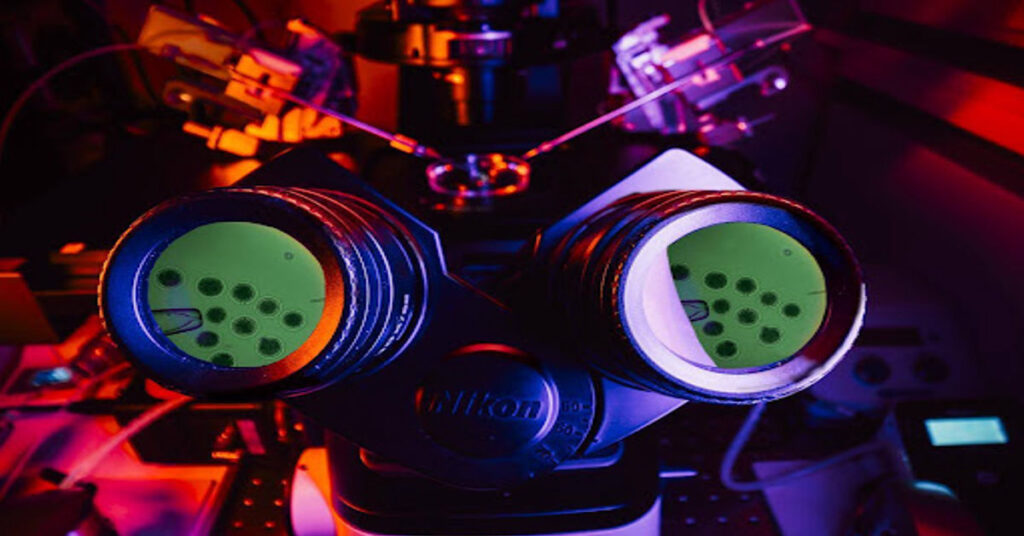In a groundbreaking fusion of ancient DNA analysis and cutting-edge genetic engineering, Colossal Biosciences has successfully brought back the dire wolf after 12,000 years of extinction. Behind this achievement stands Dr. Beth Shapiro, Colossal’s Chief Science Officer and newly elected member of the prestigious National Academy of Sciences, whose expertise in paleogenomics has been instrumental in reviving this Ice Age predator.
Shapiro, a professor of ecology and evolutionary biology at UC Santa Cruz currently on leave to serve at Colossal, brings impressive credentials to the dire wolf revival. A 2009 MacArthur Fellow, Howard Hughes Medical Institute Investigator, and award-winning science author, Shapiro was recently elected to the National Academy of Sciences, joining 120 new members from around the country in this honor that recognizes her contributions to science.
“What conservation needs is bold ideas and bold action,” Shapiro notes regarding the dire wolf achievement. “This breakthrough showcases that humans are capable of both. We can use biotechnologies to speed up the processes of selection and adaptation. With the successful birth of Colossal’s engineered dire wolf, we are one step closer to a world in which these tools are among those at our disposal to help species thrive in their rapidly changing habitats.”
The science behind the dire wolf’s return required solving complex genetic puzzles. The Colossal team, under Shapiro’s guidance, obtained genetic material from a 13,000-year-old tooth and a 72,000-year-old skull, extracting and sequencing ancient DNA to reconstruct the dire wolf genome. The analytical process revealed that gray wolves are the dire wolves’ closest living relatives, sharing 99.5% of their DNA.
Through innovative computational analysis, Shapiro and her team made a significant evolutionary discovery: dire wolves emerged between 3.5 and 2.5 million years ago through hybridization of two ancient canid lineages. This hybrid ancestry helped explain previous uncertainty about the species’ origins.
“Our novel approach to iteratively improve our ancient genome in the absence of a perfect reference sets a new standard for paleogenome reconstruction,” Shapiro explains. “Together with improved approaches to recover ancient DNA, these computational advances allowed us to resolve the evolutionary history of dire wolves and establish the genomic foundation for de-extinction — specifically for selecting with confidence dire wolf specific genetic variants that establish our targets for gene editing.”
The team identified dire wolf-specific variants in genes relating to size, musculature, coat color, and other distinctive traits. Using CRISPR gene editing, they precisely edited 20 sites across 14 genes in gray wolf cells, with 15 of these edits restoring extinct variants not seen for over 10,000 years. These edited cells were then used to clone and create living dire wolf pups through somatic cell nuclear transfer.
This achievement sets a record for the number of precise genetic edits in any living species. The genetic engineering approach was carefully selected to ensure healthy outcomes, demonstrating a scientifically rigorous and ethically sound methodology.
Shapiro’s leadership exemplifies how modern genetic technologies can contribute to conservation. Her work at Colossal extends beyond bringing back extinct species—it develops tools that can help endangered species survive in a rapidly changing world.
“Functional de-extinction uses the safest and most effective approach to bring back the lost phenotypes that make an extinct species unique,” Shapiro states. “We turn to ancient DNA to learn as much as we can about each species and, whenever possible, to link specific extinct DNA sequence variants to each key trait.”
As Colossal moves forward with the successful birth of three dire wolf pups—Romulus, Remus, and Khaleesi—Shapiro’s scientific leadership remains central to translating this breakthrough into broader conservation applications, including the successful cloning of critically endangered red wolves using the same technology.
The successful revival of dire wolves isn’t just a technological milestone—it’s a testament to how paleogenomics, under the guidance of scientists like Shapiro, can provide new pathways for addressing biodiversity challenges in the 21st century.







